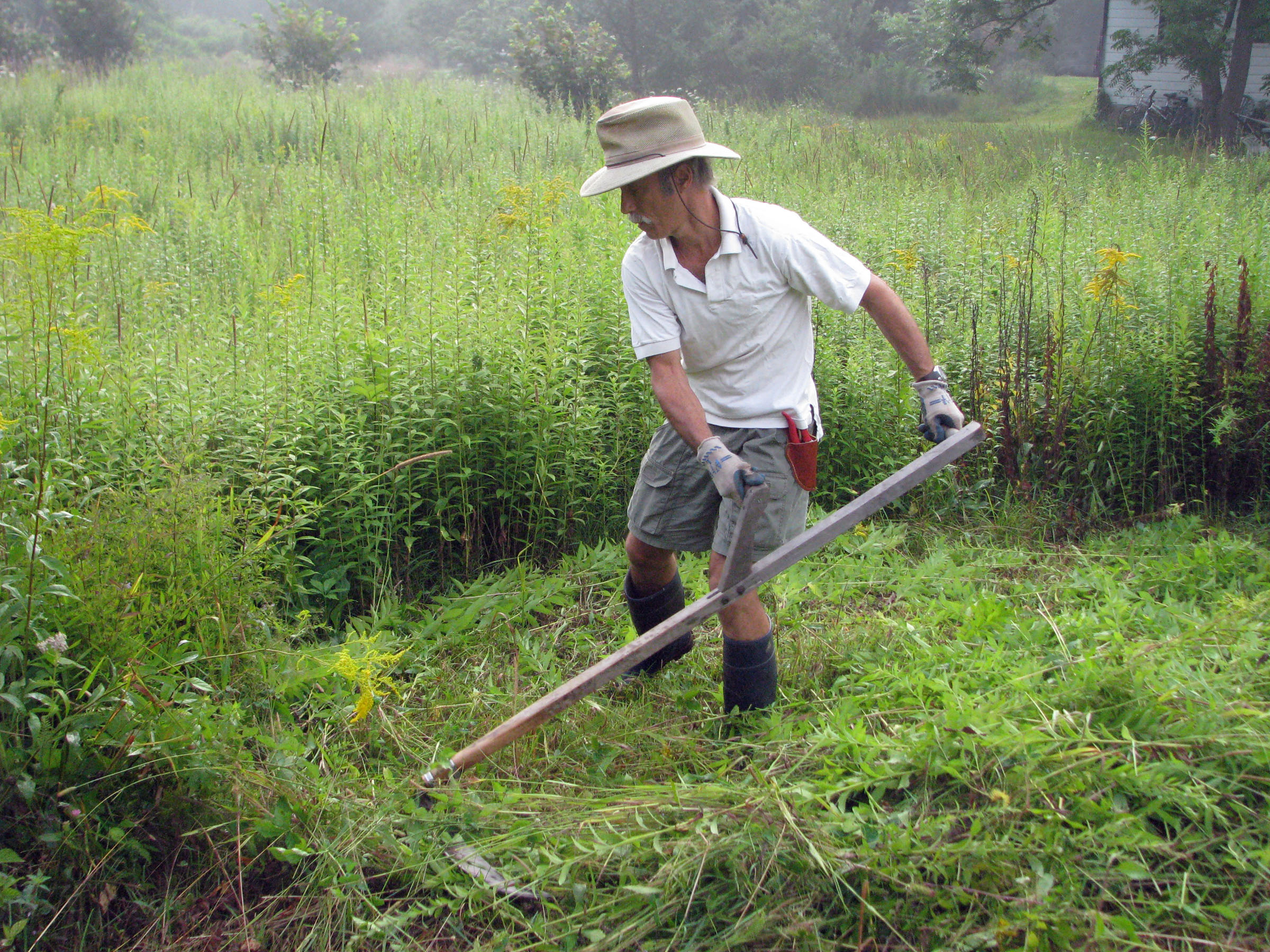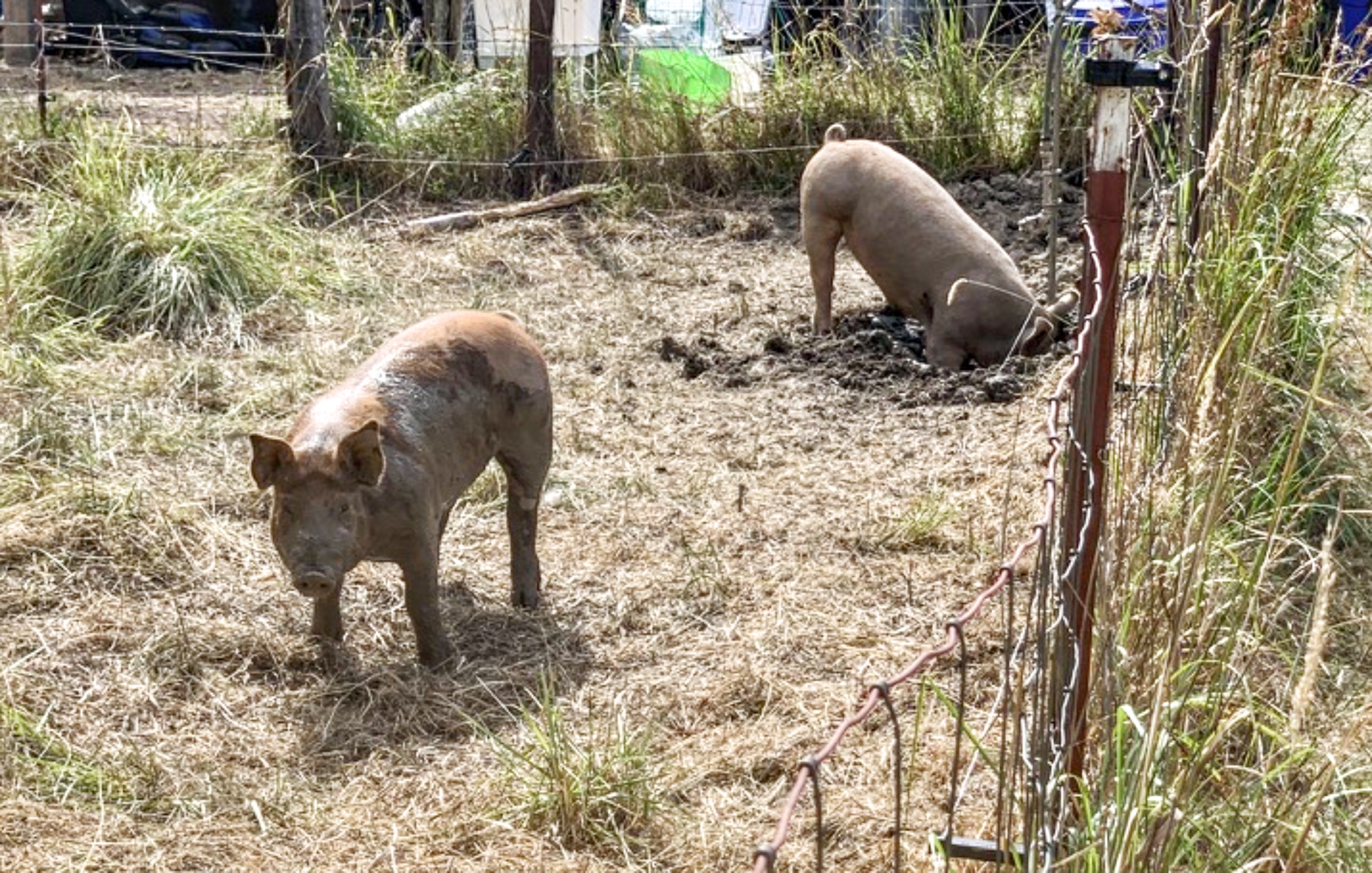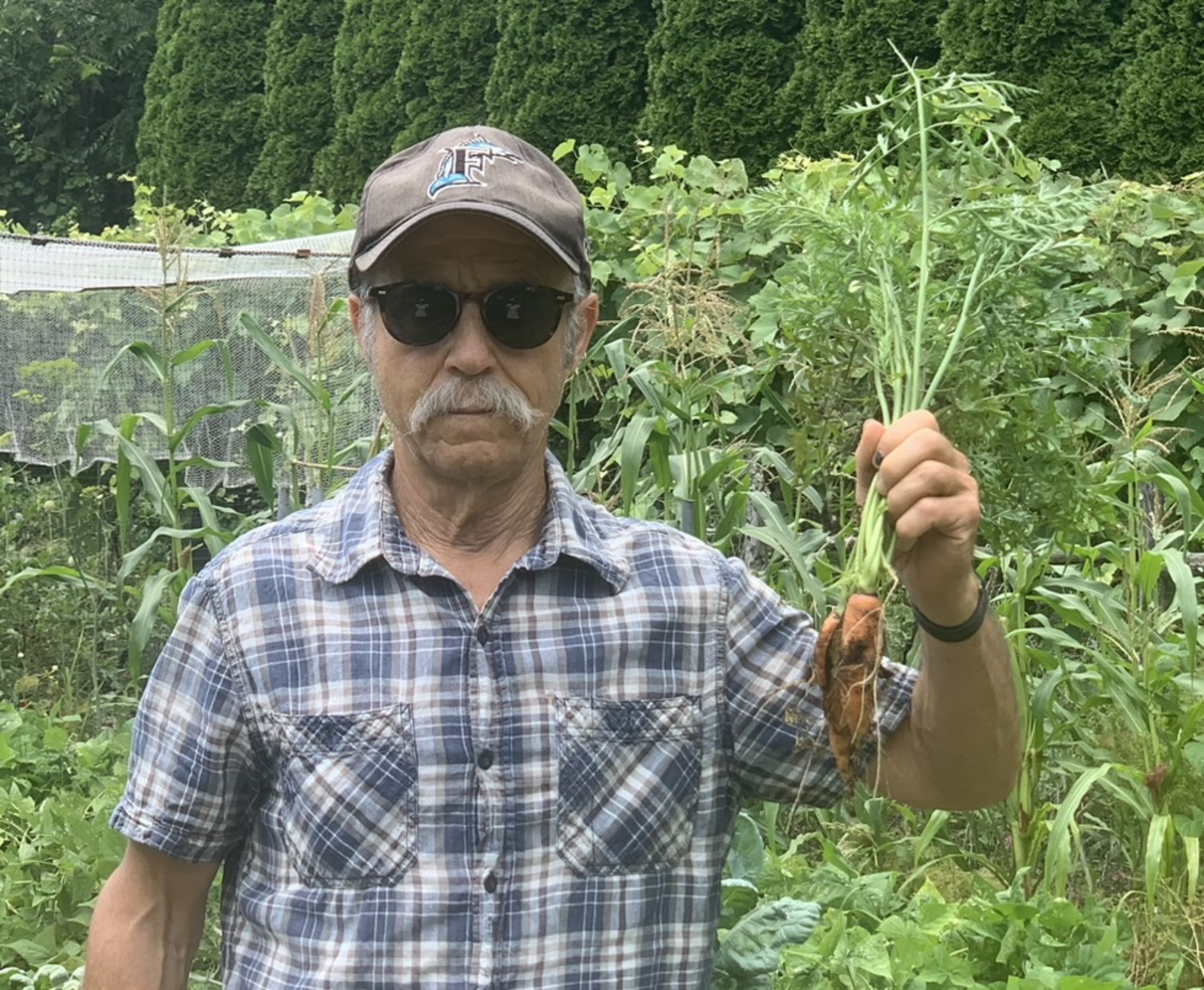SPRINGTOWN FARMDEN, INT’L HEALTH SPA
/8 Comments/in Gardening/by Lee Reich“Ancient Japanese” Exercise(?)
Welcome to Springtown Farmden, the international health spa. Allow me to show you around for a tour of our exercise offerings. The techniques and equipment used come from all reaches of the world (or at least can sound like they do).
The first couple that can get your blood pumping “come from” across the Pacific, Japan. The first of these, sīth-ing (translation: scything), does require development of some technique and access our more specialized equipment, a sīth (translation: scythe).
The sīth has a single pole with two handles attached, one at the upper end and one about halfway down. The metal weight attached at the bottom of the sīth is a couple of feet long, curved, and sharpened on its inside edge. Muscle tone and strength is created by putting the left hand on the upper handle, the right hand on the lower handle, flexing the spine to the right and then unwinding yourself counterclockwise while trailing the metal weight just above ground level. (The best of these sīths come from Austria, but are available in the US here.)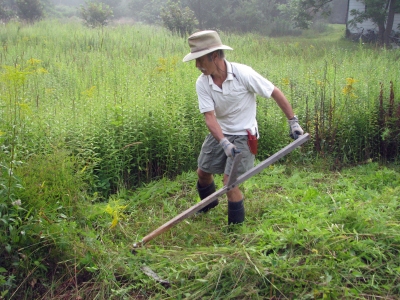
Sīth-ing can be made more rigorous by passing the sharp metal through tall grass or meadow plants. The taller the plants, the denser the plants, and the older the plants, the more the resistance. Read more
A WISE WISH?
/6 Comments/in Soil/by Lee ReichPlants, All Plants, Love it Here
You’ve got to be careful what you wish for. Nonetheless, the naturally rich, well-drained but moisture retentive soil here has made me, especially this season of abundant rainfall, heat, and sunlight — okay I’ll say it, wish I was gardening on poor soil. Then I could earmark my cultivated plants for compost, fertilizer, and other goodies that make for good soil. Weeds, except those that made their way beneath the limited areas beneath these plants, would languish.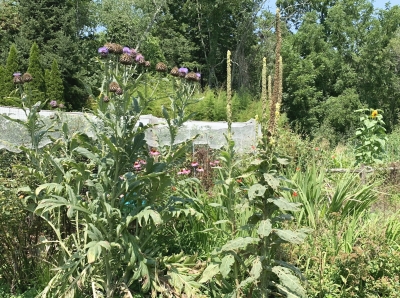 The naturally excellent soil here is weed heaven. Seems if I turn my back for a day, these interlopers, which stand waiting from outposts in field and woods, jump forward in among my cultivated plants. Quackgrass moves stealthily in from garden edges, pushing its pointy runners underground. Thistles pop up from lateral root and seeds. Read more
The naturally excellent soil here is weed heaven. Seems if I turn my back for a day, these interlopers, which stand waiting from outposts in field and woods, jump forward in among my cultivated plants. Quackgrass moves stealthily in from garden edges, pushing its pointy runners underground. Thistles pop up from lateral root and seeds. Read more
CARROTS, YUK!
/8 Comments/in Vegetables/by Lee ReichLack of Green Thumb, Or Something Else?
I just sunk my teeth into a carrot pulled mere minutes ago from the garden; the taste was not good! I’m not surprised, because that’s often the case with my carrots. For the reason why, I might turn to a book, one of my books, The Ever Curious Gardener, the last chapter where I talk about the senses, including flavor.
In that chapter I delve into various influences on flavor, things such as soil, light, moisture, day length, and temperature. They’ve all been studied, but mostly each by itself. Quoting myself,
With light, moisture, temperature, day length — so many variables — making their mark on flavor, a more additive approach to growing flavorful crops might be more useful rather than trying to parse out individual, interacting, influences.
This kind of attention has been lavished on studies with carrots by raising them in phytotrons, where light duration and intensity, day and night temperatures, and humidity can be manipulated, in pots of various types of soil. Testing soils and growing conditions mimicking those of Wisconsin, California, Florida, and Texas, the best flavored carrots…drum roll…were those grown in mineral, especially loam, soils as compared with muck soils (drained swamplands rich in organic matter) under mild winter conditions (such as in California). I’m not ready to relocate to be able to grow the most perfect carrot, and no need. Variety choice was still the most important determinant of flavor.
Read more

